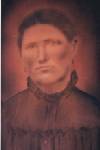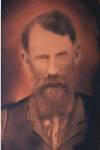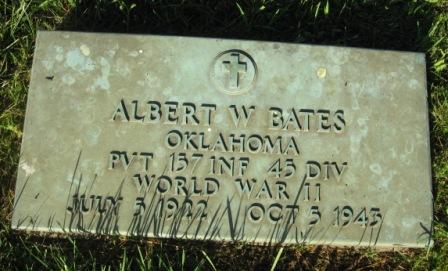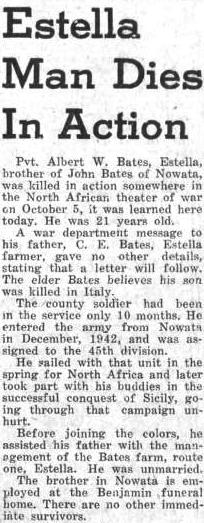Family: May 2012 Archives
Here's Merle Haggard, singing lead and doing his best imitation of Bob Wills' hollers, with three Texas Playboys: Johnny Gimble playing fiddle, Tiny Moore (next to Merle, holding a fiddle) and Eldon Shamblin (playing his Stratocaster) singing harmony.
Let's send this one out to Elizabeth "Fauxcahontas" Warren in Massachusetts.
Tiny Moore was best known as a virtuoso mandolin picker, but he was also a terrific vocalist. Tiny was only given the chance to sing lead on a few Texas Playboys recordings, but he shared lead vocal duties with Bob's youngest brother Billy Jack Wills in Billy Jack's Sacramento based western swing band (1952-1954). Eldon Shamblin, a brilliant and creative rhythm guitarist, also served as arranger and band manager for the Texas Playboys, and sang on trios and quartets from time to time. Tiny and Eldon, teamed up with steel guitarist Herb Remington on the triple guitar arrangements of big band tunes on the Tiffany Transcriptions recordings. Tiny, Eldon, and Johnny had all performed, along with Joe Holley, Alex Brashear, and Johnnie Lee Wills on Merle Haggard's 1970 album A Tribute to the Best Damn Fiddle Player in the World (Or, My Salute to Bob Wills), and Tiny and Eldon toured with Merle Haggard for a few years.
Many thanks to See-Dubya for the tip.

 I am exactly as Cherokee as Ms. Warren: Family lore says that my great-great-grandmother Nancy Catherine Boyd was a half-blood Cherokee. (Note the high cheekbones.) She was born in Ohio, but the story is that there was a community of Cherokee in Ohio who had moved there to get out of the way of white expansion into Cherokee lands in the South; many then, it is said, moved to Indian Territory to rejoin their relocated people in their "permanent" home. Nancy married William Basil Newman, who refused to let Nancy enroll with the Dawes Commission, because he didn't want his wife owning land (an allotment) in her own name; and thus old Basil deprived all his descendants of the benefits of Cherokee citizenship, or so the story goes.
I am exactly as Cherokee as Ms. Warren: Family lore says that my great-great-grandmother Nancy Catherine Boyd was a half-blood Cherokee. (Note the high cheekbones.) She was born in Ohio, but the story is that there was a community of Cherokee in Ohio who had moved there to get out of the way of white expansion into Cherokee lands in the South; many then, it is said, moved to Indian Territory to rejoin their relocated people in their "permanent" home. Nancy married William Basil Newman, who refused to let Nancy enroll with the Dawes Commission, because he didn't want his wife owning land (an allotment) in her own name; and thus old Basil deprived all his descendants of the benefits of Cherokee citizenship, or so the story goes.
Albert W. Bates was my grandfather's youngest brother, five years younger. He was drafted into the Army at age 20, served in the 157th Infantry Regiment of the 45th Division, the Thunderbirds. He is buried in Welch Cemetery near his parents and some of his siblings.

From the Oklahoma War Memorial, World War II, Part VI

ALBERT W. BATES, Private, U. S. Army. Home address: Estella, Craig County. Carl E. Bates, Father, Estella. Born July 15, 1922. Enlisted December 4, 1943. Decoration: Order of the Purple Heart. Died October 5, 1943, of shell wounds received in battle near Ponte, Italy.
From the Nowata Star, November 2, 1943:

Estella Man Dies in Action
Pvt. Albert W. Bates, Estella, brother of John Bates of Nowata, was killed in action somewhere in the North African theater of war on October 5, it wsa learned here today. He was 21 years old.
A war department message to his father, C. E. Bates, Estella farmer, gave no other details, stating that a letter will follow. The elder Bates believes his son was killed in Italy.
The county soldier had been in the service only 10 months. He entered the army from Nowata in December, 1942, and was assigned to the 45th division.
He sailed with that unit in the spring for North Africa and later took part with his buddies in the successful conquest of Sicily, going through that campaign unhurt.
Before joining the colors, he assisted his father with the management of the Bates farm, route one, Estella. He was unmarried.
The brother in Nowata is employed at the Benjamin funeral home. There are no other immediate survivors.
The World War II Honor List of Dead and Missing Army and Army Air Forces Personnel from Oklahoma lists Pvt. Bates as KIA.
Albert W. Bates' enlistment record says that he was a selectee and was enlisted in Tulsa, Oklahoma, on November 25, 1942. His civilian occupation is listed as "Semiskilled miners, and mining-machine operators."
From "A BRIEF COMBAT HISTORY OF THE 157TH INFANTRY REGIMENT IN WWII":
The regiment was first committed to battle on 10 July 1943, in the assault wave of the landings on the island of Sicily, and suffered its first casualties there. Though enemy resistance was light, twenty-seven men were drowned in the landings. Among the first to die in battle were four resolute machine gunners that held their positions unto death to keep a German counterattack from overrunning a withdrawing rifle company. The regiment conducted another landing on Sicily, in an operation to leapfrog up the coast to by-pass heavy defenses. In debarking ship in one such operation a landing craft loaded with men broke free from the ship's davits and dropped on top of another loaded landing craft that had come alongside the ship: twenty-one men were killed in this single mishap. Regimental casualties on Sicily numbered close to 200.Next, the regiment participated in the assault landings at Salerno, Italy, coming ashore the second day, 10 September 1943. They were immediately involved in fighting to break out of the beachhead, battling at such places as the Tobacco Warehouse (which changed hands four times on 12 September), Persano, and the Sele River. The regiment's 1st Battalion was hit by enemy tanks on 13 September and was surrounded and bypassed by the Germans, who moved toward the ocean, threatening the whole of the beachhead. Two of the division's artillery battalions, the 189th and the 158th stood in the way, stopped the Germans and saved the beachhead -- firing 3,650 rounds in a single day. The German defense was defeated on 17 September, and the enemy wave began to withdraw -- followed aggressively by the Americans. On 23 September Corporal James D. Slayton of K Company earned the regiment's first Medal of Honor by wiping out three German machine gun nests with rifle fire, hand grenades, and his bayonet. The next day the Regimental Commander's jeep ran over a German mine, and Colonel Ankcorn lost a leg. On 28 September 2nd and 3rd Battalions were bombed by American planes. On 6 October 1943 E Company was hit hard by an enemy counterattack, and was reduced to 45 men. Showers were arranged and clean clothes were issued to the men on 19 October -- the first such opportunities in more than forty days. With only brief spell in reserve, the regiment continued to battle the Germans, the mountains, and the cold until relieved from the line on 10 January 1944 after 72 days of continuous combat.
MORE:
Salerno: American Operations From the Beaches to the Volturno (9 September-6 October 1943)
Reminiscences of the men of the 157th Infantry
Many thanks to the Find A Grave volunteers who post images and tirelessly document gravestones.
It was a fun but busy weekend with no time for posting here. Friday night involved ferrying my oldest son from playing in Barthelmes Conservatory's spring open concert to singing with the Augustine Christian Academy show choir at the school's high school graduation. While he was busy with that, I met up with a friend, a Tulsan now sojourning in Texas, back in town to celebrate his birthday at In the Raw South, enjoying sushi, good conversation, and one of the best views in Tulsa. (And now I think of it -- too late -- it would have been a great spot to view Sunday night's sunset eclipse.)
Saturday was focused on Mayfest. Several Barthelmes Conservatory students performed on the 4th & Boston stage. While the temperatures were pleasant, the gusty winds were a challenge, and at one point several students and I were chasing several pages of piano music down 4th Street. I thought my son and his ensemble partner played as well in the open air as they had for the previous night's indoor concert, but he said that several times a gust lifted his bow off the strings. Not the ideal conditions for performing.
After a young female singer performed, we thought we were going to have a few minutes of quiet before the Barthelmes performance began, but instead the sound system was cranked up to a deafening volume. It turned out they were playing music on the 4th and Boston sound system for a "flash mob" at 4th and Main. Now, downtown Tulsa blocks are 300' by 300' from lot line (usually the building face) to lot line, plus 60' between lot lines for streets and sidewalks. So that means we were sitting within 20' or so of music cranked loud enough to be heard by dancers the length of a football field away. If you want music at 4th and Main, kindly put the speakers at 4th and Main.
We spent a little while exploring the art booths on Main Street. I was especially impressed by Douglas Fulks' pen and ink drawings of football stadiums, baseball parks, and musical instruments and Christopher Westfall's romantic paintings of Tulsa cityscapes. A Westfall print would be a great gift for a homesick Tulsan, and our convention and visitors bureau would do well to license some of his images to promote the city. I particularly liked his painting of Shades of Brown coffeehouse in Brookside.
We wound up on Boston Ave. south of 5th Street, next to the Philcade Building, one of Tulsa's Art Deco treasures. Big band music was playing on a PA system and dozens of young people (and a few older) were swing dancing in the street. This was part of the first-ever Greenwood Swingout and also part of Chalkfest, an event sponsored by Kanbar Properties, separate but alongside Mayfest, to bring people over to Boston Ave. At one point, the whole crowd lined up to do the Shim Sham, a swing line dance, to a recording of "Stompin' at the Savoy" with the late Lindy Hop legend Frankie Manning calling out the steps. Many of the folks dancing are regulars at The Oklahoma Swing Syndicate's Saturday night dances at Southminster Presbyterian Church in Brookside.
Inside the Philcade, the Tulsa Art Deco Museum held the grand opening of its preview space and gift shop, a taste of what the organizers hope to develop on a larger scale. The preview space includes displays of Deco-inspired small appliances, such as toasters and radios, and consumer product packaging -- typewriter ribbon cases, potato chip cans, and ice cream boxes. A three-seat theater in the center ran a sequence of Betty Boop cartoons which had my kids cackling. (The Deco Ball is coming up on Saturday, June 9, 2012, in the Philcade's penthouse, once home to Waite and Genevieve Phillips.
Sunday night we tried to see something of the solar eclipse just before sunset but could find only one small spot in our yard where sunlight struck our fence. The sun went behind the clouds -- no good for eclipse spotting but the sunset was beautiful, with sunbeams streaming through holes in the clouds.
The previous weekend was no less busy: Friday evening we journeyed to Fayetteville for a reception -- the University of Arkansas School of Education honored my mother-in-law, Marjorie Marugg-Wolfe, as an outstanding alumna for her work establishing single parent scholarship funds in Benton County and across Arkansas and now across the country through Aspire, a nationwide network of single parent scholarship programs. Saturday was the Oklahoma Republican State Convention in Norman. Sunday night was Mother's Day -- a relaxing celebration with extended family on a beautiful afternoon, followed by the final performance of Fiddler on the Roof at the Tulsa Performing Arts Center. ("Sunrise, Sunset" and "Sabbath Prayer" get me choked up every time.)
May has been a month of end-of-school activities, too. Final exams and final projects for the oldest son. Our daughter achieved the Classical Conversations Memory Master milestone for the second year in a row. Our youngest son finished the first book for Awana Sparks -- that involves memorizing about two dozen Bible verses and the books of the New Testament. Closing ceremonies for Classical Conversations featured a skit entirely in Latin, written and performed by the high school (rhetoric) students, and a skit set for all of the grammar and dialectic students set in pioneer days, incorporating in a creative way some of their memory work, such as history sentences, states, capitals, and geographical features, principal parts of irregular verbs, times tables, and presidents.